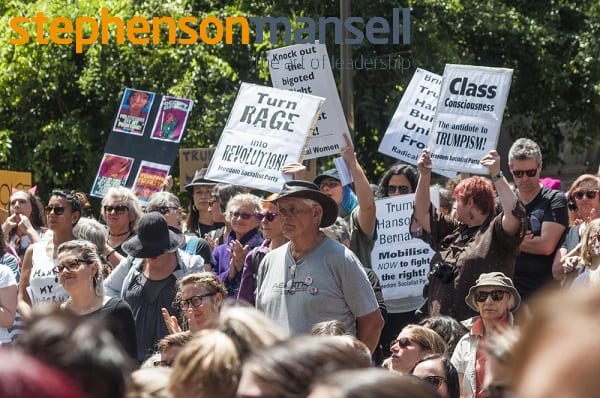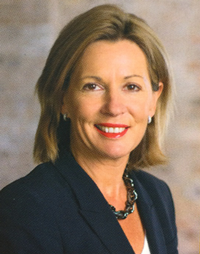This year’s task – find out what your people really think

If there is one thing we are learning in 2017, it is that inequality is dangerous for everyone – even for those who appear to benefit the most from it.
Last year saw just about everyone blindsided by democratic “uprisings” as the British voted to leave the European Union and property developer/reality TV star, Donald Trump, was elected president of the United States.
In both cases, it is understood that those who felt most disenfranchised and disempowered were the collective forces behind these “upsets”. They were registering their frustration and anger at feeling they have been left behind and ignored by successive governments and cast aside by employers.
Academics Jan-Emmanuel De Neve at Saïd Business School and Nattavudh (Nick) Powdthavee at the University of Melbourne examined data to discover that income inequality makes us all less satisfied with our lives – even if we, ourselves, are relatively well off.
“That is, the higher the share of national income that is held by the top 1%, the lower the overall well-being of the general population,” they write in an article for the Harvard Business Review.
“Specifically, we found that a 1% increase in the share of taxable income held by the top 1% hurts life satisfaction as much as a 1.4% increase in the country-level unemployment rate.”
Fairness matters at work
Perceptions of fairness also matter at work. Polling organisation Gallup started 2016 off with a warning that the we are facing a worldwide employee engagement crisis “with serious and potentially lasting repercussions for the global economy”.
You might expect someone who has been treated unfairly at work to feel badly about their employer – but the impact goes much further than that one individual. Research shows that if people observe someone else being treated unfairly at work, it will affect their own perceptions of their employer.
A perception of unfairness creates an atmosphere of distrust and hostility, erodes performance and retention, increases counter-productive behaviours, makes employees less willing to help each other and increases absenteeism.
This is really explosive in organisations because people get resentful and angry and protest.
What can leaders do to make sure their employees are not seething?
They can examine the culture of the organisation they lead to look for signs of inequality. Pay audits can uncover pay gaps (gender or otherwise).
You can look at whether the people getting promoted reflect your workforce, whether the workforce reflects your customer base and whether the workforce reflects the composition of the Australian population.
You can also dig a little to discover whether people feel comfortable being themselves at work. Look at absenteeism, at engagement statistics and complaints to human resources.
People should know how decisions are made
Transparency is one of the best ways of making sure things are fair and they are seen to be fair. Everyone should know how decisions are made on pay, benefits and promotions. They should know what is expected of them to get to the next level.
There should also be no tolerance for tyrants and bullies and leaders should model the behaviour they expect from others.
But, most of all, leaders should make the time to have conversations with as many of their people as possible, especially the people who rarely get access to your ear. Listen deeply, ask questions.
Ask how they are going at work, what their aspirations are for the coming year, how their families are and what they plan to do with their days off.

It is going to continue to be a tough and unpredictable world, but let’s focus on what we do have – rather than what we don’t have – and take care of each other.
- Remember to listen and connect – be real and authentic with your people to have real conversations and build relationships.
- Find the point of common interest as soon as you can to establish trust and rapport in every interaction. To do this you need to clear your mind of your agenda and think about the person you are talking with. Spending two minutes with real presence and connection with your people is far more valuable than trying to allocate a lot of time and not being present.
- In your management style, adjust your behaviour and language to the different personality types by meeting their needs, i.e., a structured and results driven person will be more comfortable with direction and fast decision making than someone who likes ticking off the process and consulting before reaching the outcome.
Spend time thinking through your approach, both informally and more formally with your daily interactions – this will help you relax and connect in the moment and will ultimately help you be more effective with your overall leadership.

About the author: Virginia Mansell, Executive Chairman, Stephenson Mansell Group.
Virginia Mansell is an expert and thought leader in executive coaching, mentoring and leadership. Virginia is the author of The Focused Executive, an important resource for CEOs and senior executives determined to perform at their very best. The 2nd Edition is now available with a new chapter on high performing teams.
In 1998, Virginia established The Mansell Group to provide coaching and leadership development services. In 2005, she merged this business with The Stephenson Partnership to create Stephenson Mansell Group, arguably Australia’s longest-established executive development firm. Over more than eighteen years, the Stephenson Mansell Group has worked with 6000 executives in more than 500 organisations in Australia and internationally including 30 of Australia’s top 50 companies.
In addition to her own experience as a business leader, Virginia brings to her role more than 30 years in human resource management, counselling psychology, psychotherapy and organisational consulting.





